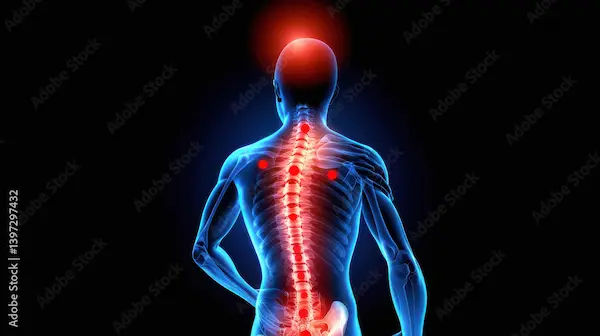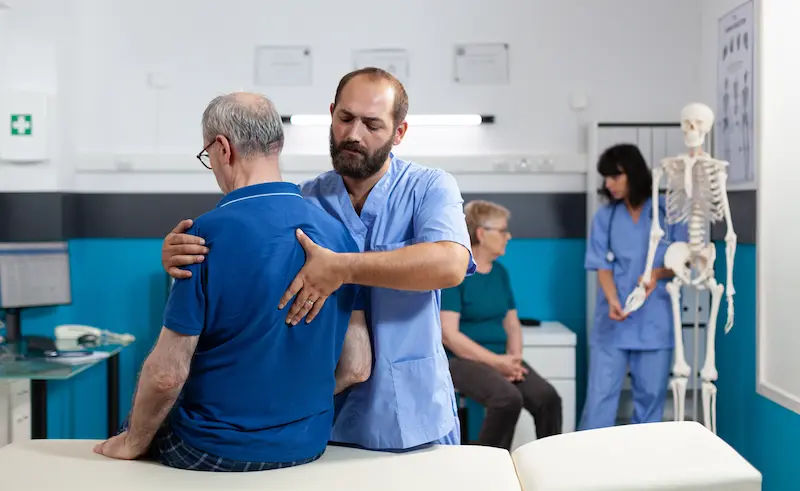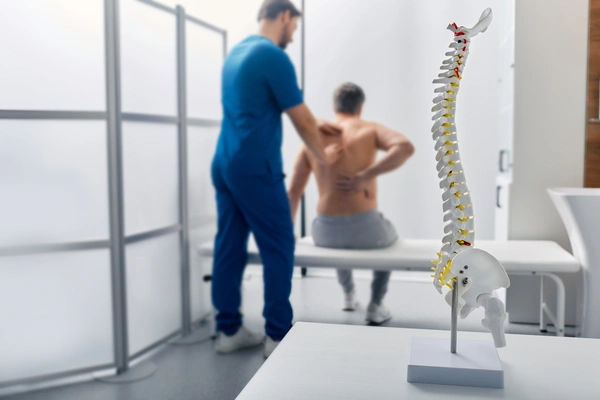First Aid for Head, Neck & Spine Trauma: A Critical Do's and Don'ts Guide
Learn the essential first aid do's and don'ts for head, neck, and spine trauma. Discover how to protect life, prevent further injury, and respond safely until medical help arrives.

Written by Dr. Mohammed Kamran
Reviewed by Dr. Dhankecha Mayank Dineshbhai MBBS
Last updated on 23rd Sep, 2025
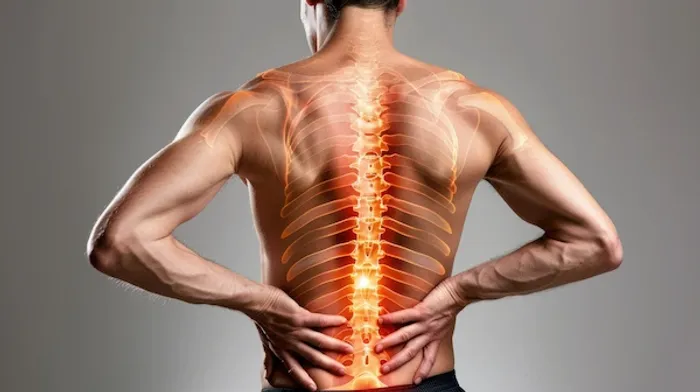
Introduction
A sudden fall, a car accident, a sports collision—traumatic incidents involving the head, neck, or spine are terrifying and incredibly time-sensitive. In these critical moments, the actions of a first responder, even a bystander with basic knowledge, can make the difference between a full recovery and permanent, life-altering disability. This guide cuts through the panic to provide a clear, actionable framework for first aid in suspected head and spinal trauma scenarios. We will meticulously detail what you must do to preserve life and function, and, just as importantly, the common mistakes you must avoid to prevent causing further harm. Your ability to act calmly and correctly can be someone's best chance at walking away from a devastating injury.
Why Head, Neck, and Spine Injuries Are So Critical
The central nervous system—comprising the brain and spinal cord—is the body's command centre. Unlike a cut on the skin, damage to nervous tissue is often irreversible. The skull protects the brain, and the vertebrae protect the spinal cord, but a significant impact can cause these structures to bruise, tear, or swell.
Understanding the Potential for Neurological Damage
The initial trauma is just the beginning. The real danger often comes from secondary damage: bleeding inside the skull (haematoma) that puts pressure on the brain, or swelling of the spinal cord that cuts off nerve pathways. This secondary damage can lead to paralysis, loss of sensory function, cognitive impairment, or even death. The primary goal of first aid is not to treat the injury itself—that requires advanced medical care—but to prevent any action that could worsen this secondary damage. The most common cause of worsened injury? Improper movement.
Your First and Most Important Step: The Initial Assessment
Before you touch the victim, you must quickly assess the situation. Your safety is paramount; you cannot help if you become a victim too.
Check the Scene for Danger (Scene Safety)
Look for ongoing threats: traffic, fire, exposed wires, unstable structures, or a violent assailant. Do not rush into a dangerous situation. If it is not safe, call for professional help immediately and wait at a safe distance.
How to Check for Responsiveness
Once the scene is safe, approach the victim. Gently tap their shoulder and shout, "Are you okay? Can you hear me?" Do not shake them, especially if you suspect a neck or spine injury.
When to Call for Emergency Medical Help Immediately
Call your local emergency number (e.g., 999, 112) immediately if the person is unconscious, even briefly, or if you observe any of these signs of a spinal cord injury:
- Altered consciousness (drowsy, confused, agitated)
- Severe pain in the head, neck, or back
- Tingling, numbness, or weakness in the arms or legs
- Loss of bladder or bowel control
- Obvious deformity of the head, neck, or back
- Difficulty breathing
The Golden Rule: Minimising Movement
If you suspect any head, neck, or spine trauma, assume there is a spinal injury. The single most important principle is to keep the person's head, neck, and back in a straight line to prevent any bending or twisting.
Consult a Neurologist for Personalised Advice
What is Spinal Motion Restriction?
This is the medical term for minimising movement of the spine. Until medical professionals can fully assess the injury with imaging, the spine is treated as if it is fractured. Any movement could turn a stable fracture into an unstable one, turning a bruise into a severed spinal cord.
Signs That Suggest a Potential Spinal Injury
- Mechanism of injury: High-energy events like car crashes, falls from height, diving into shallow water.
- Complaints: The victim complains of neck pain, back pain, or "electric shock" sensations.
- Physical signs: The head or neck is held in an awkward position.
- Neurological signs: Weakness, numbness, or paralysis in any limb.
Step-by-Step First Aid: What You SHOULD Do (The Do's)
How to Stabilise the Head and Neck Manually
This is your primary action while waiting for help. Kneel behind the victim's head. Place your hands on either side of their head, cradling it. Keep their head in a neutral, inline position, aligned with their body. Hold it steady until emergency medical services arrive and take over. This is the most effective way to provide immobilisation without equipment.
Managing a Conscious Victim
- Reassure them. Tell them to stay as still as possible.
- Instruct them not to try to move their head or neck.
- Ask them to blink or squeeze your hand if they can understand you, to check for responsiveness without moving.
Managing an Unconscious Victim Who is Breathing
- While maintaining manual stabilisation, check for breathing.
- If they are breathing, continue holding their head and monitor their breathing until help arrives.
- If they are not breathing, you must begin CPR, but try to minimise head-tilt as much as possible.
- Focus on chest compressions.
Dealing with Bleeding and Helmets
- Bleeding: Apply firm pressure around the wound with a clean cloth, but avoid putting direct pressure on a suspected skull fracture. Do not apply pressure to a wound with an embedded object.
- Helmets: Do not remove a helmet. It provides excellent stabilisation. Only remove it if the person is not breathing and you cannot perform CPR with it on, or if it is so loose that it cannot stabilise the head. This is a two-person job best left to paramedics.
Critical Mistakes to Avoid: What You MUST NOT Do (The Don'ts)
Never Move the Person Unnecessarily
Unless the scene is immediately life-threatening (e.g., fire, rising water), do not drag, pull, or try to carry the victim. Never try to "sit them up" to see if they are okay.
Do Not Remove a Helmet
As stated, helmet removal is a complex medical procedure that risks severe neck manipulation.
Leave it to the professionals.
Avoid Bending or Twisting the Neck
Do not prop their head up on a pillow or blanket, as this flexes the neck. Do not allow them to turn their head to look at you.
Do Not Offer Food, Drink, or Medication
The person may require emergency surgery, and anything in their stomach increases the risk of complications from anaesthesia. Also, a head injury can impair swallowing, leading to choking.
Specific Scenarios: Sports Injuries, Falls, and Car Accidents
The principles remain the same, but the context differs. For a football player who does not get up, a coach should immediately stabilise the head and not allow the player to "shake it off." In a car accident, if the person is conscious and seated, instruct them to look straight ahead and not turn to talk to you. After a fall, do not help them stand up. In all cases, manual stabilisation and calling emergency medical services is the protocol.
Conclusion
Witnessing a severe accident is frightening, but being equipped with knowledge empowers you to be part of the solution. Remember, the role of a first aider in head, neck, and spine trauma is not to diagnose or heal, but to preserve life and prevent further injury until expert medical help arrives. By prioritising scene safety, calling emergency services immediately, and mastering the simple yet critical skill of manual stabilisation, you become a vital link in the chain of survival. If you are ever unsure about the severity of a head injury, it is always best to err on the side of caution and seek a professional medical opinion. If you or someone you know has experienced head trauma and is experiencing persistent headaches, dizziness, or confusion, consult a doctor online with Apollo24|7 for further evaluation and guidance.
Consult a Neurologist for Personalised Advice
Consult a Neurologist for Personalised Advice

Dr. Uddalak Chakraborty
Neurologist
8 Years • MBBS,MD(GENL. MED.),DM(NEUROLOGY)
Kolkata
VDC Clinic, Kolkata

Dr. Uddalak Chakraborty
Neurologist
8 Years • MBBS, MD(GENL.MED.),DM(NEUROLOGY)
Kolkata
MCR SUPER SPECIALITY POLY CLINIC & PATHOLOGY, Kolkata

Dr. Aditendraditya Singh Bhati
Neurosurgeon
18 Years • MBBS(2004), DNB Neurosurgery(2014); MNAMS; Fellow Neuroendoscopy
Delhi
Apollo Hospitals Indraprastha, Delhi
(100+ Patients)
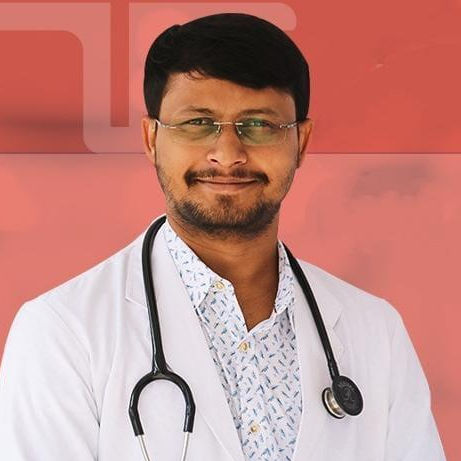
Dr. Ganeshgouda Majigoudra
Neurologist
10 Years • MBBS, MD ( GENERAL MEDICINE) DM (NEUROLOGY)
Bengaluru
Apollo Clinic, JP nagar, Bengaluru

Dr Rajashekar Mummadi
Neurologist
3 Years • MBBS, DNB General Medicine, DRNB Neurology
Hyderabad
Dr Ram's Neuro Clinic, Hyderabad
Consult a Neurologist for Personalised Advice

Dr. Uddalak Chakraborty
Neurologist
8 Years • MBBS,MD(GENL. MED.),DM(NEUROLOGY)
Kolkata
VDC Clinic, Kolkata

Dr. Uddalak Chakraborty
Neurologist
8 Years • MBBS, MD(GENL.MED.),DM(NEUROLOGY)
Kolkata
MCR SUPER SPECIALITY POLY CLINIC & PATHOLOGY, Kolkata

Dr. Aditendraditya Singh Bhati
Neurosurgeon
18 Years • MBBS(2004), DNB Neurosurgery(2014); MNAMS; Fellow Neuroendoscopy
Delhi
Apollo Hospitals Indraprastha, Delhi
(100+ Patients)

Dr. Ganeshgouda Majigoudra
Neurologist
10 Years • MBBS, MD ( GENERAL MEDICINE) DM (NEUROLOGY)
Bengaluru
Apollo Clinic, JP nagar, Bengaluru

Dr Rajashekar Mummadi
Neurologist
3 Years • MBBS, DNB General Medicine, DRNB Neurology
Hyderabad
Dr Ram's Neuro Clinic, Hyderabad
More articles from Spine Injury
Frequently Asked Questions
What is the most important thing to remember for a suspected spinal injury?
The absolute most critical action is to minimise all movement of the head, neck, and back. Keep the person still and manually stabilise their head in a neutral position until emergency medical services arrive.
Should I remove a motorcycle helmet after an accident?
Generally, no. Removing a helmet risks twisting the neck and worsening a spinal injury. Only remove it if the person is not breathing and you cannot perform CPR with it on, or if the helmet is so loose it fails to provide stabilisation.
How long should I hold the person's head still?
You should maintain manual stabilisation until paramedics or another trained professional explicitly tells you they are taking over. This could be several minutes. Do not let go until you are relieved.
What if the person starts vomiting?
If the person is unconscious and vomiting, and you are alone, you must carefully log-roll them onto their side to prevent choking, all while keeping their head, neck, and spine in a straight line. This is very difficult alone, which is why calling for help is the first step.
Can a person walk away from a spinal injury?
Yes, initially. Some spinal injuries may not cause immediate paralysis. Symptoms like pain, numbness, or weakness can develop hours later due to swelling. This is why any significant mechanism of injury (major fall, car crash) warrants immediate medical evaluation, even if the person feels fine initially.
